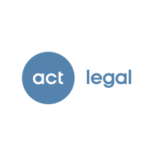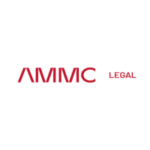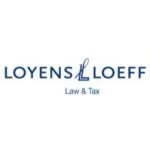-
What is the environmental framework and the key pieces of environmental legislation in your jurisdiction?
Legislative Decree no. 152/2006 (hereinafter, the “Code”), composed by eight parts and 64 annexes, has a central role in Italian environmental legislation. In Part I are codified the principles, the basis of Italy’s environmental policy, like the principles of sustainable development, prevention, precaution and “the polluter pays” principle. The other seven parts of the Code are dedicated to the main sectors of environmental law. Part II is dedicated to the Environmental Impact Assessment (EIA), Environmental Strategic Assessment (ESA) and Integrated Pollution prevention and control (IPPC); instead Part III is about soil protection and water resources management; Part IV is dedicated to the waste management and remediation of contaminated sites; Part V is about air protection and air emissions; Part V-bis, formed by only one article, contains provisions for particular industrial installations; Part VI deals with compensation for environmental damage, while Part VI-bis contains the sanctioning system. However, many disciplines are excluded from the Code and find their source within separate pieces of legislation.
-
Who are the primary environmental regulatory authorities in your jurisdiction? To what extent do they enforce environmental requirements?
With reference to environmental competences, the phenomenon of organizational complexity is particularly marked in Italy.
An important role is played by the Ministry of Energy and Energy Security (hereinafter (“Ministero dell’Ambiente e della Sicurezza Energetica”, hereinafter “MASE”) established in 1986. As the central body, its functions of environmental protection are increased over time. Recently some functions directly affecting the environmental interest, have been transferred to the MASE (e.g. energy) while others remain in the hands of other Ministries, such as the Ministry of Economic Development, the Ministry of Health and the Ministry of Agricultural Policies. Alongside the MASE, there are important technical bodies. As a back-up for the MASE, there is the Institute for Environmental Protection and Research (hereinafter, “ISPRA”), which coordinates the regional and provincial environmental agencies. Vertical organizational complexity is added to the horizontal organizational complexity: important administrative functions are also assigned to regional and local authorities, as well as to private entities, such as consortia of producers of certain goods. The entities described above take part in various capacities in the context of environmental proceedings, among which the following are the most important: planning procedures, environmental authorizations, the setting of standards, the provision of economic measures and also the powers of ordinance, sanctions and control.
-
What is the framework for the environmental permitting regime in your jurisdiction?
The Italian environmental authorization regime provides for a wide variety of authorities competent for environmental permitting, both at national level as well as on a local level (Region, Province, Municipality). The legal framework is essentially regulated by the respective sectorial environmental legislation, integrated by L. 241/1990 (as subsequently amended and modified) applying, in general, to all administrative proceedings. Italian environmental permitting regime is characterized by a tendency towards simplification by adopting the “single authorization model” in which various authorization procedures referring to the same activity are conveyed. Some of this are of European derivation (e.g. IPPC authorisations regulated by Part II of the Code). Others instead have been introduced by the national legislator with the primary task of simplifying the bureaucratic burdens for small and medium-sized enterprises, such as Environmental Single Permit (also known as “Autorizzazione Unica Ambientale” or “AUA”), regulated by Presidential Decree no. 59/2013. The “Single authorization model” has also been set up for other sectors (e.g. renewable energy plants, remediation of brownfields, PAUR (“Provvedimento Autorizzatorio Unico Regionale”) governed by art. 27-bis of the Code, etc.). In order to realise projects provided for in the National Recovery and Resilience Plan (hereinafter, “NRRP”), implementing Next Generation EU (hereinafter, “NGEU”), some authorisation procedures have been streamlined and simplified.
-
Can environmental permits be transferred between entities in your jurisdiction? If so, what is the process for transferring?
In Italy there is a significant number of “environmental permits” of different kind and nature. All environmental permits are administrative acts. Each type of permit is subject to a specific discipline governed by different national and/or local (regional/provincial) regulations. In general, the transfer of authorization is possible, but requires involving the competent Authority (in general, the authority which has issued such authorisation). The procedures for transferring differ on a case-by-case basis, depending on the type of authorisation involved. Some may only require filing an application with the competent Authority, which, after having verified the existence of the requisites, adopts the necessary changes to the related environmental permit. Some others may require more complex procedures in which the Authority is entitled to make additional requests and investigations. Failure to transfer an environmental permit risk to be qualified as exercise of a non-authorised business, subject to sanctioning.
-
What rights of appeal are there against regulators with regards to decisions to grant environmental permits?
Notwithstanding the right to ask the competent Authority to reconsider its ruling(s), the plant’s manager (“Gestore”) or any subjects with legal standing can file an appeal before the Regional Administrative Courts within 60 days of notification or publication of the administrative decision taken by the competent Authorities. For some sectors, Italian law provides a special shorter term of 30 days within which to take action. However, against many (not all) types of administrative decisions, it is also possible to file an appeal to the President of the Italian Republic in a longer term of 120 days. Rulings of the Regional Administrative Courts can be appealed in front of the Council of State (“Consiglio di Stato”).
-
Are environmental impact assessments (EIAs) for certain projects required in your jurisdiction? If so, what are the main elements of EIAs (including any considerations in relation to biodiversity or GHG emissions) and to what extent can EIAs be challenged?
Part II of the Code lays down procedural obligations (EIA) relevant to public and private projects that are likely to have significant effects on the environment. The EIA aims to identify, describe, and assess the direct and indirect significant effects of a project on the following factors: human beings, fauna and flora population and human health; biodiversity, with particular attention to species and habitats protected under Directive 92/43/EEC and Directive 2009/147/EC; land, soil, water, air and climate and landscape; material assets, cultural heritage and the landscape; the interaction between these factors.
Projects falling under the scope of the EIA are divided into categories and listed in Annexes II, II-bis, III and IV of the Code. Projects listed in Annexes II and III are those that are considered as having significant effects on the environment and, as a rule, are subject to a mandatory assessment. Projects listed in Annexes II-bis e IV do not necessarily have significant effects on the environment in every case. Thus, they should undergo a determination process – commonly known under the term “screening” – to establish if they are likely to have significant effects on the environment. The EIA projects listed in Annexes II and II-bis fall within the competence of the Ministry for Ecological Transition, while those listed in Annexes III and IV fall within the competence of the single regions (which can also delegate the competence to their provinces).
The EIA decision might be to grant the development consent, and in that case, it has to include a reasoned conclusion, and any necessary environmental condition, a description of any measures envisaged to avoid, prevent or reduce and, if possible, offset significant adverse effects on the environment as well as monitoring measures. In case of refusal of the development consent, the decision shall be reasoned and therefore state the main reasons for the refusal.
The decision might be challenged before the regional administrative court on the ground of formal issues, based on law violation, or on the ground of substantial issues, based on technical reasons. In the last case, since the decision entails the discretionary judgment of the administration, the challenge is issuable only if the decision is affected by significant logical or reasoning faults.
-
What is the framework for determining and allocating liability for contamination of soil and groundwater in your jurisdiction, and what are the applicable regulatory regimes?
The “core” of Italy’s brownfields-legislation is set forth in Part IV of the Code. However, both at national level as well as on local level (Regions, Provinces and Municipalities), further legislation exists. The Italian legal system on remediation is inspired by the “polluter pays” principle, according to which the responsibility for the remedial operations lies with the subject responsible for the contamination. The “polluter”, i.e., the subject to whom the pollution is attributable (at least from an objective point of view), has to carry out the remediation/rehabilitation actions if and to the extent that the contamination is attributable to his own conduct / omission. An owner, who is “innocent”, is not obliged to carry out remedial works. However, he has a patrimonial liability limited to the value of the site after it has been remediated.
-
Under what circumstances is there a positive obligation to investigate land for potential soil and groundwater contamination? Is there a positive obligation to provide any investigative reports to regulatory authorities?
When an event arises that may potentially contaminate the site (soil and/or groundwater), the polluter is obliged to perform a preliminary investigation in the area. The results of such environmental investigations, that will influence subsequent actions, must be reported to the competent authorities. Under national law (Part IV of the Code), subjects, who are not responsible for the contamination, are not obliged to carry out investigations. However, they are entitled to carry out investigation and/or remediation operations on their own initiative in order to avoid patrimonial liability and, in any case, the arising of legal uncertainty regarding future criminal or compensation liabilities, or even the allowed uses of the land. Under some local legislation, however, a subject planning to develop a site might be required investigate potential soil and groundwater contamination prior to developing a site. Furthermore, in case of industrial installation subject to IPPC legislation, Italian legislation requires a base-line report to be carried out in order to investigate the status of the soil and groundwater.
-
If land is found to be contaminated, or pollutants are discovered to be migrating to neighbouring land, is there a duty to report this contamination to relevant authorities?
When an event arises that may potentially contaminate the site, the polluter and the “innocent” owner/operator are obliged to notify the competent Authorities immediately. Failure to give notification by the polluter is sanctioned. Duty of notification also applies to public administrations.
-
Does the owner of land that is affected by historical contamination have a private right of action against a previous owner of the land when that previous owner caused the contamination?
According to the Code, the “polluter pays” principle also applies to historical contamination. If the polluter is identified, he is subject to remediation obligations. The owner of contaminated land affected by historical contamination can invoke extra-contractual liability of the previous owner or the operator who caused such contamination. However, the Italian Civil Supreme Court excludes dual liability (contractual as well as extra-contractual liability) in the event of damage to the right of ownership based on contract. In such case, the rights of action depend on the structure of the deal (asset deal/share deal) as well on the extent to which the provisions set forth by the Italian Civil Code are applicable.
-
What are the key laws and controls governing the regulatory regime for waste in your jurisdiction?
Italian waste legislation is very widespread. Its “core” is regulated under Articles 179 – 238 (Part IV) of the Code. Many details, however, are specifically governed by single ministerial decrees. Furthermore, depending on the type of waste (e.g. WEEE, batteries and accumulators, mineral waste oils, ships, vehicles, end-of-life tyres, etc.) specific regulations do apply. Also with regard to treatment operations, which waste may undergo, Italy has enacted specific legislation (e.g. Legislative Decree no. 36/2003 for landfills; various end-of-waste decrees relating to recovery/recycling operations; WSR for transboundary waste shipments; etc.).
-
Do producers of waste retain any liabilities in respect of the waste after having transferred it to another person for treatment or disposal off-site (e.g. if the other person goes bankrupt or does not properly handle or dispose of the waste)?
Waste producers/holders, unless entitled to directly manage such waste, are obliged to hand over such waste to duly authorised third parties, including municipal waste management operators. In case the waste has been handed over to duly authorised third parties others than the municipal waste management operators, liability only ceases if the waste producer/holder receives back the duly completed certificate (confirming the receipt of such waste) within 3 months after such consignment. The precise boundaries of the aforesaid liability, also in case of transboundary shipments, are governed by art. 188 of the Code as well as by case law. The literal wording of said provision has sometimes been extensively interpreted, especially by criminal courts’ decision (e.g. also including cases of unproper handling or disposing of the waste).
-
To what extent do producers of certain products (e.g. packaging/electronic devices) have obligations regarding the take-back of waste?
Italy has introduced detailed regulations for the so-called “extended producer responsibility” (hereinafter, “EPR”). This includes, among other things, the take-back obligation related to waste arising from certain consumer goods (e.g., packaging, electrical and electronic equipment, batteries, end-of-life vehicles, used mineral oils, used edible oils, tires, PVC, tobacco product waste, inert waste, etc.). The trend is towards extending EPR to other types of products as well. New EPR schemes are likely to be introduced in the future. EPR schemes vary significantly from one another; however, under Directive (EU) 851/2018, common standards are to be applied by all of them. Non-compliance with the obligations set forth under the respective regulation governing the related EPR scheme is subject to sanctions.
Recently, in relation to products subject to an Extended Producer Responsibility (EPR) regime and placed on the market through electronic commerce platforms (so-called marketplaces), it has become compulsory for said market-places to comply with EPR obligations to the extent set forth by Art. 178-quarter of the Code
-
What are the duties of owners/occupiers of premises in relation to asbestos, or other deleterious materials, found on their land and in their buildings?
At national level, the key regime is regulated under Law no. 257/1992. Ministerial Decree of 6 September 1994 sets requirements for civil or commercial/industrial building structures, privately owned properties and/or open to the public. Owners and/or managers of the activities, that take place therein, must notify the local health authorities (local health service – “ATS”) of the presence of asbestos containing materials (hereinafter, “ACM”). Furthermore, it is mandatory to designate a person responsible for the control and coordination of all maintenance activities involving ACM. The responsible person must document the location of ACM and ensure compliance with effective safety measures during any event that may cause a degradation of ACM. Owners and/or managers also provide proper information to occupiers about the presence of ACM in the building, potential hazards, and the behaviours to be adopted. Actions to be undertaken (including timing) depend on the state of conservation of the ACM, assessed by applying a so-called Degradation Index. Additional obligations may be set forth at local level.
-
To what extent are product regulations (e.g. REACH, CLP, TSCA and equivalent regimes) applicable in your jurisdiction? Provide a short, high-level summary of the relevant provisions.
REACH Regulation (EC) no. 1907/2006, and CLP Regulation (EC) no. 1272/2008 and Mixtures and Regulation (EU) 2019/1021on Persistent Organic Pollutants (POPs) are mandatory in Italian jurisdiction. The provisions of REACH regulation are underpinned by the precautionary principle. In fact the scope of REACH regulation is to ensure a high level of protection of human health and the environment, imposing a system for registration, evaluation, authorisation and restriction of chemicals. The CLP regulation is based on the United Nations Harmonised Worldwide Chemicals Classification and Labelling System (GHS) and requires that manufacturers, importers or downstream users of substances or mixtures to properly classify, label and package hazardous chemicals prior to placing on the market. As the REACH Regulation the POP legislation is based on the precautionary principle and it aims to restrict the production and use of POPs in order to protect the human health and the environment.
Furthermore, under special product legislation, one can find, mainly based on European Legislation, further legislation acts (e.g. electronical equipment; packaging; etc.).
-
What provisions are there in your jurisdiction concerning energy efficiency (e.g. energy efficiency auditing requirements) in your jurisdiction?
Energy efficiency is primarily regulated by national provisions that transpose European law (Directive 2012/27/EU as amended, among others, by Directive (EU) 2018/2002). Among these, Legislative Decree no. 102/2014 (as subsequently amended) plays an important role. This decree establishes the necessary measures to promote and improve energy efficiency at the national level. The implementation of these measures is also necessary to achieve the energy saving objectives set out by the National Integrated Energy and Climate Plan (“PNIEC”) pursuant to Regulation (EU) 2018/1999. The approved National Recovery and Resilience Plan (NRRP) includes numerous funds aimed at achieving energy efficiency. There are, however, several provisions concerning energy performance in buildings, the latest being the new Directive (EU) 2024/1275, approved in 2024.
Large companies are required to conduct energy audits and submit the results to the National Agency for New Technologies, Energy and Sustainable Economic Development (“ENEA”). ENEA establishes and manages a database of companies subject to energy audits, which includes, among other things, the energy diagnosis report. Directive 2006/32/EC, repealed by Directive 2012/27/EU, on energy end-use efficiency and energy services, was transposed by Legislative Decree no. 115/2008 (as subsequently amended).
-
What are the key policies, principles, targets, and laws relating to the reduction of greenhouse gas emissions (e.g. emissions trading schemes) and the increase of the use of renewable energy (such as wind power) in your jurisdiction?
The European Emissions Trading Scheme (ETS), set forth by Directive (EU) 2018/410 (transposed by Legislative Decree no. 47/2020), introduces important changes compared to the previous Directive 2003/87/EC and accelerates the withdrawal of emission allowances available on the market. Under the cap-and-trade mechanism, emission limits are allocated to each installation or aircraft (CO2 allowances in tonnes). If actual emissions exceed the allocated allowances, the operator must buy allowances to surrender to cover its emissions. Italy has significantly exceeded European emission reduction targets in both the ETS and non-ETS sectors. Legislative Decree no. 28/2011 defines the tools, mechanisms, incentives and institutional, financial and legal framework necessary to achieve the objectives for energy from renewable sources up to 2020.
The EU Directives 2023/958/EU and 2023/959/EU, which updated the rules on the trading of greenhouse gas emission allowances under Directive 2003/87/EC, have been implemented by Legislative Decree no. 147 of September 10, 2024. This decree incorporates the latest EU developments from 2023, particularly regarding the Emission Trading System (ETS). Among the provisions, the new target for emission reductions compared to 2005 levels (62% instead of 42%) and the inclusion of the maritime sector in the system are notable. The rules for the aviation sector have also been revised, with a gradual phase-out of free greenhouse gas emission allowances.
The changes also include the establishment of a parallel system to the ETS, called ETS II, which is dedicated to the building and road transport sectors, as well as other sectors (mainly small industry). Finally, from 2024, municipal waste incineration plants will be required to monitor and report their emissions, even if they are not included in the obligations of the ETS system.
In Italy, incentives for the installation of renewable energy plants are provided through various mechanisms, depending on the type of energy source, plant size, and construction date (e.g., the “Conto Energia” introduced by Legislative Decree no. 387/2003 and subsequent amendments, offering financial incentives based on solar energy production; Ministerial Decree of June 23, 2016; biomethane, etc.).
Recently, with Law No. 41 of April 21, 2023, converting Decree-Law No. 13 of February 24, 2023 (PNRR Decree 3), exemptions from environmental impact assessments (EIAs) were introduced until June 30, 2024, for certain renewable energy projects. Additionally, various provisions in the budget laws of 2019, 2020, 2021, 2022, and 2023 have been enacted to significantly impact emissions reduction and climate change through public expenditure allocations.
Furthermore, on November 25, the Council of Ministers approved Legislative Decree 190/2024, the new Consolidated Act on Renewable Energy (FER), aimed at simplifying all bureaucratic procedures related to the use of renewable energy plants through a single primary legislative text.
-
Does your jurisdiction have an overarching “net zero” or low-carbon target and, if so, what legal measures have been implemented in order to achieve this target.
Italian legislation does not provide a domestic “net zero” target, thus referring to the Union-wide net zero target set out by Regulation (EU) 2021/1119 (European Climate Law) Art 2(1). Similarly, as to low-carbon targets, EU ETS scheme and Regulation (EU) 2018/1999 (see Art 2, point (11)) establishes EU-wide binding targets.
As to non-ETS sectors greenhouse gas emissions, national-specific targets are set out by Regulation (EU) 2018/842 (Effort Sharing Regulation, hereinafter ESR). Pursuant to ESR Art 4(1) and Annex I, Italy shall, in 2030, limit its greenhouse gas emissions at least by 33% in relation to its greenhouse gas emissions in 2005. With respect to renewable energy, without prejudice to the Union’s 2030 targets for energy and climate, Legislative Decree no. 199/2021 Art 3(1), transposing into domestic legislation the Directive (EU) 2018/2001 (Renewable Energy Directive II, hereinafter RED II), provides a binding national-level target of at least 30% for the share of the energy consumed.
A multitude of legal measures, both sector-based and cross-cutting, have been implementing in order to achieve such targets. Formerly, Italian decision-making bodies have already provided financial incentives and conditionality (renewable energy; waste and circular economy; agriculture), labelling obligations (waste and circular economy), tools for companies or consumer participation in the production processes (e.g., EPR schemes or renewably energy communities). As to cross-cutting measures, a crucial role for the achievement of the Union and national climate and energy targets is played by environmental permits and assessments (e.g., IPPC or EIA). Further, particularly with respect to those projects encompassed in the National Recovery and Resilience Plan or in the National Integrated Energy and Climate Plan, procedural fast track measures have been set out.
-
Are companies under any obligations in your jurisdiction to have in place and/or publish a climate transition plan? If so, what are the requirements for such plans?
Starting from September 25, 2024, corporate sustainability reporting becomes a legal obligation in Italy, as established by national legislation. Legislative Decree No. 125 of September 6, 2024, implements European Directive 2022/2464/EU, known as the Corporate Sustainability Reporting Directive (CSRD), imposing new transparency and reliability requirements on sustainability data, with the aim of ensuring comparable, relevant, and reliable information.
In particular, companies are required to prepare sustainability reports, i.e., non-financial statements regarding their environmental impact. Companies must provide a minimum level of mandatory and comparable information, according to common standards throughout the European Union. This represents a true strategic and operational action plan for the management and governance of climate-related risks and opportunities.
Regarding the content, companies must indicate, for example, the solutions they are adopting, their technological maturity, and alignment with the Taxonomy Regulation, the cost of these solutions in relation to their ability to reduce CO2 emissions, as well as the costs related to the disposal of company assets and the economic impacts resulting from entering new value chains and emission quota regulations. Companies will also need to prioritize interventions on individual assets, starting with those having the highest carbon “lock-in,” or those for which low-carbon alternatives exist. Additionally, potential obstacles, including legal constraints arising from long-term procurement commitments (e.g., in the context of critical raw materials), will need to be identified. These measures will demonstrate alignment with the EU’s climate objectives.
The identified mitigation solutions must then be coordinated with the company’s financial and investment plans, indicating potential sources for financing the transition.
-
To what extent does your jurisdiction regulate the ability for products or companies to be referred to as “green”, “sustainable” or similar terms? Who are the regulators in relation to greenwashing allegations?
The Italian legal system provides several market-based environmental protection tools, including voluntary labelling schemes.
EU Ecolabel and Eco-Management and Audit Scheme (EMAS), provided respectively, by Regulation (EC) 66/2010 (Ecolabel Regulation) and Regulation (EC) 1221/2009 (EMAS Regulation), are directly applicable and enforceable in the domestic jurisdiction. Whilst the former is intended to assess the products’ environmental soundness, although using a LCA approach, the latter conformity assessment deals with management systems. The competent authority to award Ecolabel or EMAS conformity assessment is the Ecolabel-Ecoaudit Board, a public authority appointed by the Ministry for Environment and Energy Security (“Ministero dell’ambiente e della sicurezza energetica”, hereinafter MASE) pursuant to Ecolabel Regulation Art 4 and EMAS Regulation Art 11. Companies, organisations or operators interested shall apply before the Board providing all the relevant requirements in order to be granted an Ecolabel or EMAS.
A similar framework is established with regard to food/feed sector conformity assessment, although the competent authority is the Ministry for Agriculture, Food and Forestry Policies rather than MiTE. Environmental concerns are particularly taken into account within the label of organic products provided by Regulation (EU) 2018/848.
Besides such purely public and environmental-oriented labels and audit schemes, economic operators may receive other environmental conformity assessments provided by the International Standards Organisation and falling under the scope of Regulation (EC) 765/2008, setting out the requirements for accreditation. To this regard, the National Accreditation Body for the purpose of Regulation (EC) 765/2008 is Accredia, a non-profit private legal entity whose member are public administrations and other public entities as well as private stakeholders. Thus, products’ and operators’ conformity may be assessed by any Conformity Assessment Body having been granted an accreditation certificate from Accredia.
Italian decision-making bodies have not yet issued binding legislative acts on greenwashing. Therefore, other regulatory authorities such as the Antitrust Agency, CONSOB (Commissione Nazionale per le Società e la Borsa, an independent administrative authority) and the Bank of Italy through policy documents come to the rescue.
CONSOB has listed the action to combat greenwashing phenomena among its strategic supervisory objectives in its 2022-24 plan. Specifically, supervisory activity will be developed on sustainable investments, offering documents, advertising, and the activities of advisors, consistent with the implementation timeline of ESG regulations, to improve disclosure of sustainability factors (https://www.consob.it/web/area-pubblica/finanza-sostenibile).
At the same time, in 2021, an Italian Court of First Instance (Tribunale di Gorizia, n. 2021/712) issued the first precautionary order on greenwashing, The use of precautionary protection in the fight against greenwashing has moved the paradigm from seeking compensation to preventing damage. The order recognized the claimant company’s case and condemned the defendant company for having provided non-testable and misleading information about the recycled material content of the product and ordered it to pay a fine and to publish the decision on its website for 60 days.
On June 17, 2024, the EU Council conditionally accepted the draft directive that aims to impose standards on the claims businesses make regarding the environmental quality of their products (so-called “green claims”). In Italy, the process of approving the European Delegation Bill is underway, which mandates the government to transpose Directive 2024/825/EU. As noted, this directive expands the scope of prohibited commercial practices to explicitly include cases related to so-called greenwashing.
Provisions already in force that can help expose and address the phenomenon of greenwashing can currently be found in several provisions of the Consumer Code.
-
Are there any specific arrangements in relation to anti-trust matters and climate change issues?
The Antitrust Authority has the power to sanction unfair business agreements and merger operations between companies. Among these, in addition to the well-known green-washing practices, the Antitrust Authority can sanction all conduct that, in addition to harming competition in the market to the disadvantage of consumers, also generates undesirable effects on the environment, delaying the transition to more sustainable products or making it less convenient. Therefore, in order for the Antitrust Authority to sanction conduct contrary to environmental sustainability, at present, it is necessary for such conduct to be contrary to the protection of competition.
In its Annual Report on Activities in 2023, the Antitrust Authority noted that combating greenwashing is among the priorities of the New Consumer Agenda 2020, the Circular Economy Action Plan and the Green Deal Industrial Plan for the Green Economy” as well as being a key point of the ”Directive 2024/825/EU on Empowering Consumers for the Green Transition adopted by the European Council on February 20, 2024.” Also for the purpose of carrying out its institutional activities, the Antitrust Authority notes that the European regulatory measure has “the primary objective of contributing to a circular, clean and green economy, enabling consumers to make informed purchasing decisions” by introducing “specific rules aimed at combating unfair commercial practices that prevent consumers from making sustainable consumption choices, such as misleading environmental claims, practices associated with premature obsolescence of goods and durability, sustainability labels or non-transparent and non-credible sustainability information tools.”
-
Have there been any notable court judgments in relation to climate change litigation over the past three years?
In June 2021, a climate litigation lawsuit, widely referred to in the press as the “Universal Judgement,” was filed before the Civil Court of Rome. The plaintiffs, a group of citizens and environmental NGOs, are suing the Italian government for failing to comply with its international obligations under the UNFCCC and the Paris Agreement. The third hearing took place on September 13, 2023, and the first-instance proceedings are nearing completion.
In May 2023, several NGOs filed another lawsuit against a major Italian energy company and its primary shareholders, holding them accountable for damages related to climate change and demanding that the company reduce its greenhouse gas emissions. However, the Civil Court of Rome decided to suspend this case pending a decision by the Italian Supreme Court on the NGOs’ appeal regarding jurisdictional issues.
More recently, following the April 2024 ruling of the European Court of Human Rights (CEDU), the Civil Court of Piacenza (order 1439/2024) established some key principles: environmental protection, within the global context of anthropogenic climate change, must necessarily include “climate mitigation.” As a result, the fundamental right to a healthy environment, which is inherently tied to human dignity, must encompass the right to a liveable and habitable climate. This includes both the broader climate and urban microclimates.
-
In light of the commitments of your jurisdiction that have been made (whether at international treaty meetings or more generally), do you expect there to be substantial legislative change or reform in the relation to climate change in the near future?
To address climate change, several legislative provisions have been introduced, particularly the National Climate Change Adaptation Plan, the National Recovery and Resilience Plan (PNRR), and the National Integrated Energy and Climate Plan (PNIEC). Italian decision-making bodies are especially focused on renewable energy, waste management, and the circular economy, offering fast-track procedures for strategic infrastructure projects, financial incentives, EPR schemes, and more. Despite these efforts, some sectors still seem to be neglected, particularly issues related to land use. However, the debate on soil consumption appears to be advancing at both the European and national levels, making it a serious candidate for the next reform related to climate change. In general, legislative changes or reforms concerning climate change are expected.
-
To what extent can the following persons be held liable for breaches of environmental law and/or pollution caused by a company: (a) the company itself; (b) the shareholders of the company; (c) the directors of the company; (d) a parent company; (e) entities (e.g. banks) that have lent money to the company; and (f) any other entities? Transactions
a) Administrative, civil and criminal liability arising from the violation of environmental regulations may also be attributed to a company having legal personality, which may be called upon, as civilly liable, to answer financially for administrative and criminal sanctions arising from violations committed by its employees, or by persons who have violated environmental regulations in the interest of the company or whose conduct is attributable to the company itself.
In the event of pollution, the company is obliged to carry out remediation activities and is liable for environmental damage in accordance with current legislation. In addition, the company is liable for damages caused by environmental violations or offences (committed by its employees) to third parties under the general civil liability regime of the Civil Code. If specific offences are committed by its management or employees, the company may be subject to corporate liability under Legislative Decree no. 231/2001.
b) Environmental liability of shareholders follows the general principles of Italian company law. Generally, members of limited liability companies are not liable for the actions of the company itself. There are cases where their liability can be assessed (by piercing the corporate veil) if (i) they have taken on a de facto managerial role in the company; (ii) they have interfered in individual acts or abused powers of direction and coordination, in the case of a majority shareholding.
c) Directors represent the governing body of the company and, unless they have properly delegated environmental liability by proxy (the criteria and formalities of which are established by case law), will have direct environmental liability.
d) The liability regime of the parent company is similar to that applicable to the shareholders referred to in (b) above, given that a parent company plays a controlling and coordinating role pursuant to Article 2497 of the Civil Code. If the parent company has instructed its subsidiary to perform acts or transactions that have compromised the integrity of the company’s assets in violation of the ordinary principles of proper administration, it shall be liable to creditors and other shareholders for the damage to the assets.
e) The lender’s liability regime. Lenders, generally in Italy, are not liable for violations of environmental laws by borrowers, unless they have interfered in the decisions, by actions or omissions of due conduct, that caused the environmental violation, damage or pollution. Where lenders hold a property guarantee, they may acquire the position of innocent owners in the event of enforcement of the guarantee.
In general, however, case law is rapidly evolving therefore always requiring a case-by-case analysis.
-
To what extent can: (a) a buyer assume any pre-acquisition environmental liabilities in an asset sale/share sale; and (b) a seller retain any environmental liabilities after an asset sale/share sale in your jurisdiction?
In the case of corporate operations characterized by the continuity of the company (for example, mergers, split ups etc.), even in the face of a formal change in the centre of juridical imputation, there is a general evolutionary-continuative principle of legal relations. Consequently, there is a succession on the civil law level in the obligations inherent to the phenomena of contamination of sites and environmental pollution. The principle accepted by the jurisprudence is that interventions of repair, safety measures, reclamation and restoration are the exclusive responsibility of the entity responsible for the contamination. The notion of the responsible entity also includes the universal successor. Therefore, obligations and responsibilities consequent to the commission of the offence must be considered transmissible as a result of extraordinary corporate operations that entail a universum jus succession among the subjects involved. In principle, the various implications from the point of view of environmental responsibility must, however, be assessed very carefully, taking into account the rapidly evolving case-law. Through due diligence processes, widely accepted in Italy also in relation to environmental matters, it is possible for the potential purchaser of a company to become aware of possible responsibilities/passivities on the part of the seller, and to negotiate instruments capable of transferring to the latter – at least on an economic level – the relative consequences, without prejudice to civil law remedies.
-
What duties to disclose environmental information does a seller have in a transaction? Is environmental due diligence commonplace in your jurisdiction?
Under civil law, precontractual and contractual liability can arise in dealings between a buyer and seller in case of failure to notify situations that do not meet environmental standards. Details depend also on the nature of the asset being sold. Under public law, a wide variety of disclosure obligations are set forth. The content of such disclosure obligations depends on the matrices affected by the environmental problems. Further disclosure obligations may also specifically originate from single environmental permits released. Recent legislation regulating social and environmental disclosure also imposes disclosure obligations on the subjects indicated therein. The exercise of environmental due diligences has become a commonplace in Italy, starting at least from the late Nineties.
-
What environmental risks can be covered by insurance in your jurisdiction, and what types of environmental insurance policy are commonly available? Is environmental insurance regularly obtained in practice?
The role of insurance as a guarantee tool in environmental regulation is still in the process of development in Italian law. However, there are some significant experiences and evolutionary dynamics that deserve attention. An association of insurers and reinsurers (originally named Pool Inquinamento; however, the label changed to Pool Ambiente in 2019) offers insurance products to cover pollution damage. There are also different policies, depending on the type of activity. Cover is also available from insurance companies that are not part of the Pool Ambiente. These companies offer alternative insurance products to those generally available on the Italian market.
Companies that obtain ISO 14001 Certification or EMAS registration pay reduced insurance rates. State and regional laws provide for the insurance tool as a guarantee for an amount calculated according to pre-established criteria (e.g., activities that may cause an environmental impact). There is currently no comprehensive data on developments in environmental insurance coverage requirements. The degree to which environmental damage is effectively covered by environmental insurance is currently a critical issue.
-
To what extent are there public registers of environmental information kept by public authorities in your jurisdiction? If so, what is the process by which parties can access this information?
The reference text for the organic discipline in the matter of information and right of access is the Legislative Decree no. 195/2005, transposing Directive 2003/4/EC. Said decree requires public entities to make updated information relating to the environment available to the public, also through the setting up of databases. The obligation to publish environmental information on the administrations’ website was also provided for by art. 40 of Legislative Decree no. 33/2013, according to which specific emphasis should be given to environmental information in a specific section called “Environmental information”. Without being exhaustive, it should be noted that the documentation relating to the Environmental Impact Assessment (EIA), Environmental Strategic Assessment (ESA) and Integrated Pollution prevention and control (IPPC) is published on the website of the MASE, while the Register of contaminated sites is present on the regional sites. In addition, the most recent legislation is characterized by the provision of public registers such as the National Electronic Register for the traceability of waste, managed directly by the MASE, and the national register of producers, within the framework of Extended Producer Responsibility. Anyone who wants to obtain the access can make a request to the public administration, which must make the documentation available within 30 days from the date of receipt of the request or within 60 days in case of a complex or particularly wide request. In case of illegitimate refusal to request access, it is possible to request access to administrative remedies (ombudsman) and to the administrative judge.
-
To what extent is there a requirement on public bodies in your jurisdiction to disclose environmental information to parties that request it?
The right of access has a very broad scope both from a subjective and an objective point of view. In fact, the public administration must make the documents accessible to anyone who requests them, without the subject having to demonstrate an interest in them. At the same time, from an objective point of view, a very broad notion of environmental information has been envisaged, which can be contained in any material. The cases of exclusion of the right of access are mandatory and, in any case, the administration is required to justify its refusal.
-
Are entities in your jurisdictions subject to mandatory greenhouse gas public reporting requirements?
The Legislative Decree No. 125 of September 6, 2024, requires companies to prepare a sustainability report that must provide an integrated view of corporate strategies, adopted policies, and long-term sustainability objectives. The mandatory content includes:
- A description of the business model and corporate strategy in relation to ESG issues.
- Sustainability goals, including any targets for reducing greenhouse gas emissions by 2030 and 2050.
- The role of governing and supervisory bodies in managing sustainability matters, with specific details on their competences and responsibilities.
- Corporate policies and due diligence procedures adopted to identify, prevent, and mitigate negative impacts along the value chain.
- Relevant performance indicators to measure the effectiveness of the policies implemented.
-
Have there been any significant updates in environmental law in your jurisdiction in the past three years? Are there any material proposals for significant updates or reforms in the near future?
The development of environmental law in Italy has been characterized by significant fragmentation of regulations, with recent EU legislation providing clearer guidelines for future legislative initiatives. Italy has consistently aligned with EU requirements, sometimes exceeding them, a practice known as “gold-plating,” particularly in areas such as green public procurement. This trend is expected to continue as Italy adapts to the evolving regulatory landscape.
Over the past few years, the Italian legislator has acted on multiple fronts. At the first level, Italy has implemented key EU directives, such as the 2020 European “Circular Economy Package,” including Legislative Decree No. 116/2020 (which transposed Directive 851/2018) and more recently, supplementary provisions to the same decree. Other important measures include Law Decree No. 111/2019 (converted into Law No. 141/2019), which addresses air quality standards under Directive 2008/50/EC, and the draft decree implementing Directive (EU) 2020/2184 on the quality of water for human consumption. These are part of Italy’s broader efforts to align its domestic laws with EU environmental and climate objectives.
A second level of action has focused on simplifying environmental and energy procedures. Legislative Decrees No. 76/2020 and No. 77/2021 introduced measures to streamline administrative processes, while regional-level changes, such as the PAUR (Single Regional Authorization Procedure), aim to improve the efficiency of environmental assessments. This simplification effort also extends to governance, with the aim of reducing red tape and speeding up key processes related to strategic infrastructure and energy projects.
The third level of environmental provisions concerns emergency measures adopted in response to the COVID-19 pandemic, the Ukraine war, and the energy crisis. Several legislative interventions were introduced to address urgent issues, including national energy policies and the need for rapid adaptation to the new geopolitical and economic contexts.
The fourth level relates to ongoing reforms aimed at simplifying and rationalizing environmental obligations, particularly in the context of the National Recovery and Resilience Plan (PNRR) and Next Generation EU (NGEU). These reforms are intended to accelerate the implementation of projects while ensuring compliance with environmental standards.
In November 2023, the Ministry of the Environment appointed a commission of experts tasked with preparing a proposal for the reform of the Italian Environmental Code and related decrees. One of the key objectives of this reform is to align Italian environmental law with the constitutional amendments made in 2022, which recognized environmental protection as a fundamental principle of the Republic. Other goals include simplifying and rationalizing the regulatory framework to make it more effective and adaptable to future challenges.
Moreover, in October 2024, the Environment Decree (Decree-Law No. 153/2024) came into effect, introducing changes to authorization procedures, governance, and the protection of water resources. This decree represents a significant step towards the modernization of Italy’s environmental framework, with a focus on increasing efficiency and responding to both national and global environmental challenges.
Overall, Italian environmental law is evolving in a fragmented yet increasingly coordinated manner, with significant efforts to align with EU regulations, simplify procedures, and address pressing environmental, economic, and geopolitical challenges.
Environmental law in Italy is evolving to align with European goals, focusing on energy transition, waste management, and sustainability. Key reforms include streamlining renewable energy processes, promoting circular economy practices, addressing the water crisis, and updating the Environmental Code. Fiscal incentives for ecological transition are also being revised. However, the complexity of regulations and stakeholders slows down rapid reform.
Italy: Environment
This country-specific Q&A provides an overview of Environment laws and regulations applicable in Italy.
-
What is the environmental framework and the key pieces of environmental legislation in your jurisdiction?
-
Who are the primary environmental regulatory authorities in your jurisdiction? To what extent do they enforce environmental requirements?
-
What is the framework for the environmental permitting regime in your jurisdiction?
-
Can environmental permits be transferred between entities in your jurisdiction? If so, what is the process for transferring?
-
What rights of appeal are there against regulators with regards to decisions to grant environmental permits?
-
Are environmental impact assessments (EIAs) for certain projects required in your jurisdiction? If so, what are the main elements of EIAs (including any considerations in relation to biodiversity or GHG emissions) and to what extent can EIAs be challenged?
-
What is the framework for determining and allocating liability for contamination of soil and groundwater in your jurisdiction, and what are the applicable regulatory regimes?
-
Under what circumstances is there a positive obligation to investigate land for potential soil and groundwater contamination? Is there a positive obligation to provide any investigative reports to regulatory authorities?
-
If land is found to be contaminated, or pollutants are discovered to be migrating to neighbouring land, is there a duty to report this contamination to relevant authorities?
-
Does the owner of land that is affected by historical contamination have a private right of action against a previous owner of the land when that previous owner caused the contamination?
-
What are the key laws and controls governing the regulatory regime for waste in your jurisdiction?
-
Do producers of waste retain any liabilities in respect of the waste after having transferred it to another person for treatment or disposal off-site (e.g. if the other person goes bankrupt or does not properly handle or dispose of the waste)?
-
To what extent do producers of certain products (e.g. packaging/electronic devices) have obligations regarding the take-back of waste?
-
What are the duties of owners/occupiers of premises in relation to asbestos, or other deleterious materials, found on their land and in their buildings?
-
To what extent are product regulations (e.g. REACH, CLP, TSCA and equivalent regimes) applicable in your jurisdiction? Provide a short, high-level summary of the relevant provisions.
-
What provisions are there in your jurisdiction concerning energy efficiency (e.g. energy efficiency auditing requirements) in your jurisdiction?
-
What are the key policies, principles, targets, and laws relating to the reduction of greenhouse gas emissions (e.g. emissions trading schemes) and the increase of the use of renewable energy (such as wind power) in your jurisdiction?
-
Does your jurisdiction have an overarching “net zero” or low-carbon target and, if so, what legal measures have been implemented in order to achieve this target.
-
Are companies under any obligations in your jurisdiction to have in place and/or publish a climate transition plan? If so, what are the requirements for such plans?
-
To what extent does your jurisdiction regulate the ability for products or companies to be referred to as “green”, “sustainable” or similar terms? Who are the regulators in relation to greenwashing allegations?
-
Are there any specific arrangements in relation to anti-trust matters and climate change issues?
-
Have there been any notable court judgments in relation to climate change litigation over the past three years?
-
In light of the commitments of your jurisdiction that have been made (whether at international treaty meetings or more generally), do you expect there to be substantial legislative change or reform in the relation to climate change in the near future?
-
To what extent can the following persons be held liable for breaches of environmental law and/or pollution caused by a company: (a) the company itself; (b) the shareholders of the company; (c) the directors of the company; (d) a parent company; (e) entities (e.g. banks) that have lent money to the company; and (f) any other entities? Transactions
-
To what extent can: (a) a buyer assume any pre-acquisition environmental liabilities in an asset sale/share sale; and (b) a seller retain any environmental liabilities after an asset sale/share sale in your jurisdiction?
-
What duties to disclose environmental information does a seller have in a transaction? Is environmental due diligence commonplace in your jurisdiction?
-
What environmental risks can be covered by insurance in your jurisdiction, and what types of environmental insurance policy are commonly available? Is environmental insurance regularly obtained in practice?
-
To what extent are there public registers of environmental information kept by public authorities in your jurisdiction? If so, what is the process by which parties can access this information?
-
To what extent is there a requirement on public bodies in your jurisdiction to disclose environmental information to parties that request it?
-
Are entities in your jurisdictions subject to mandatory greenhouse gas public reporting requirements?
-
Have there been any significant updates in environmental law in your jurisdiction in the past three years? Are there any material proposals for significant updates or reforms in the near future?
















